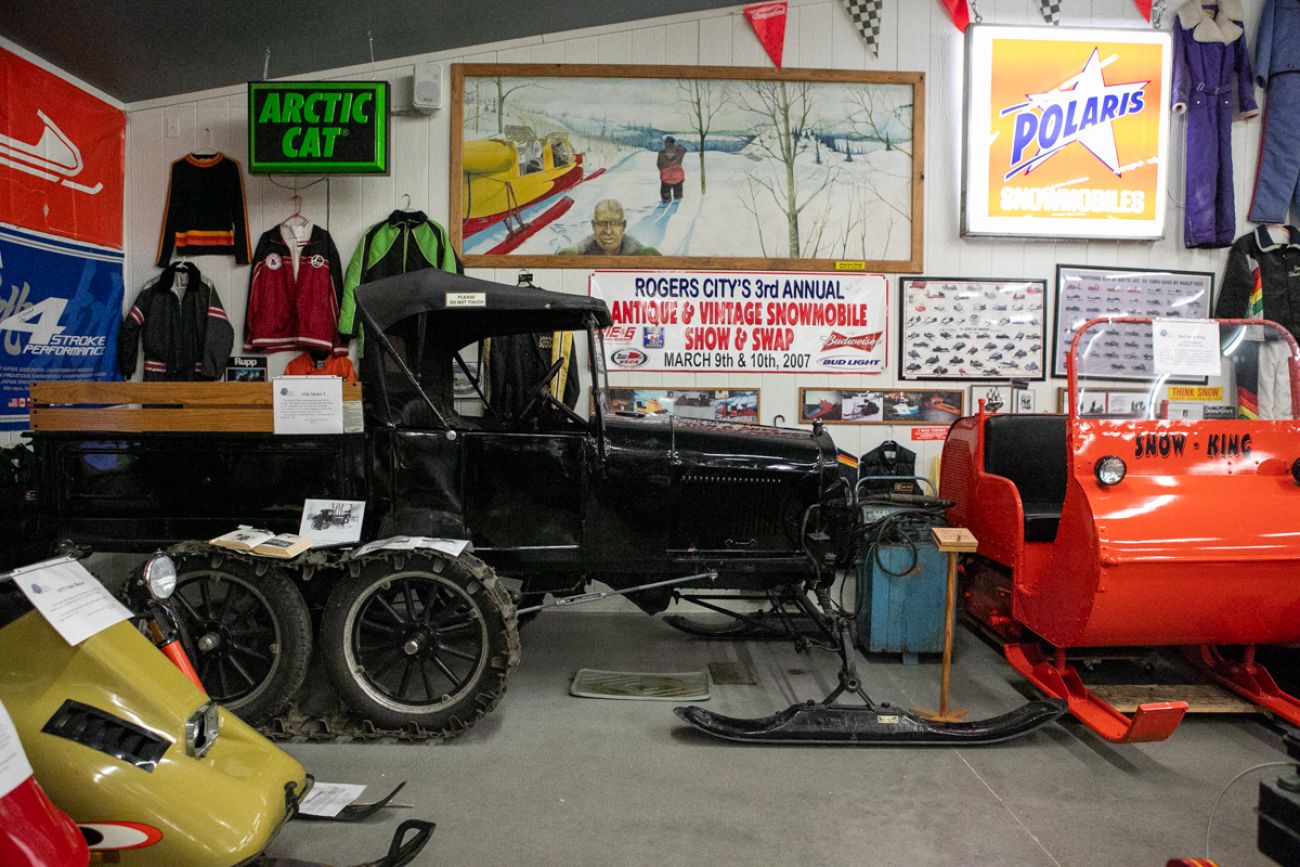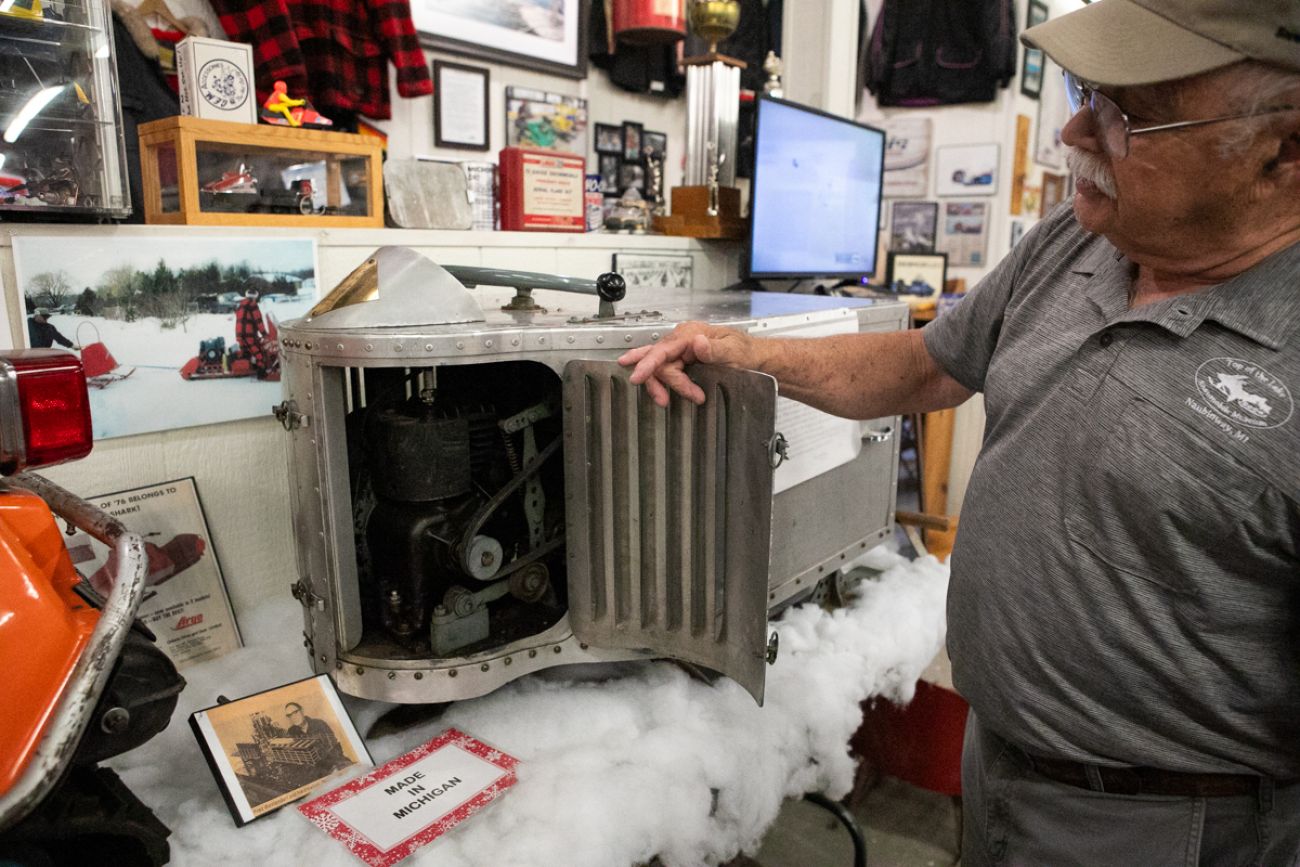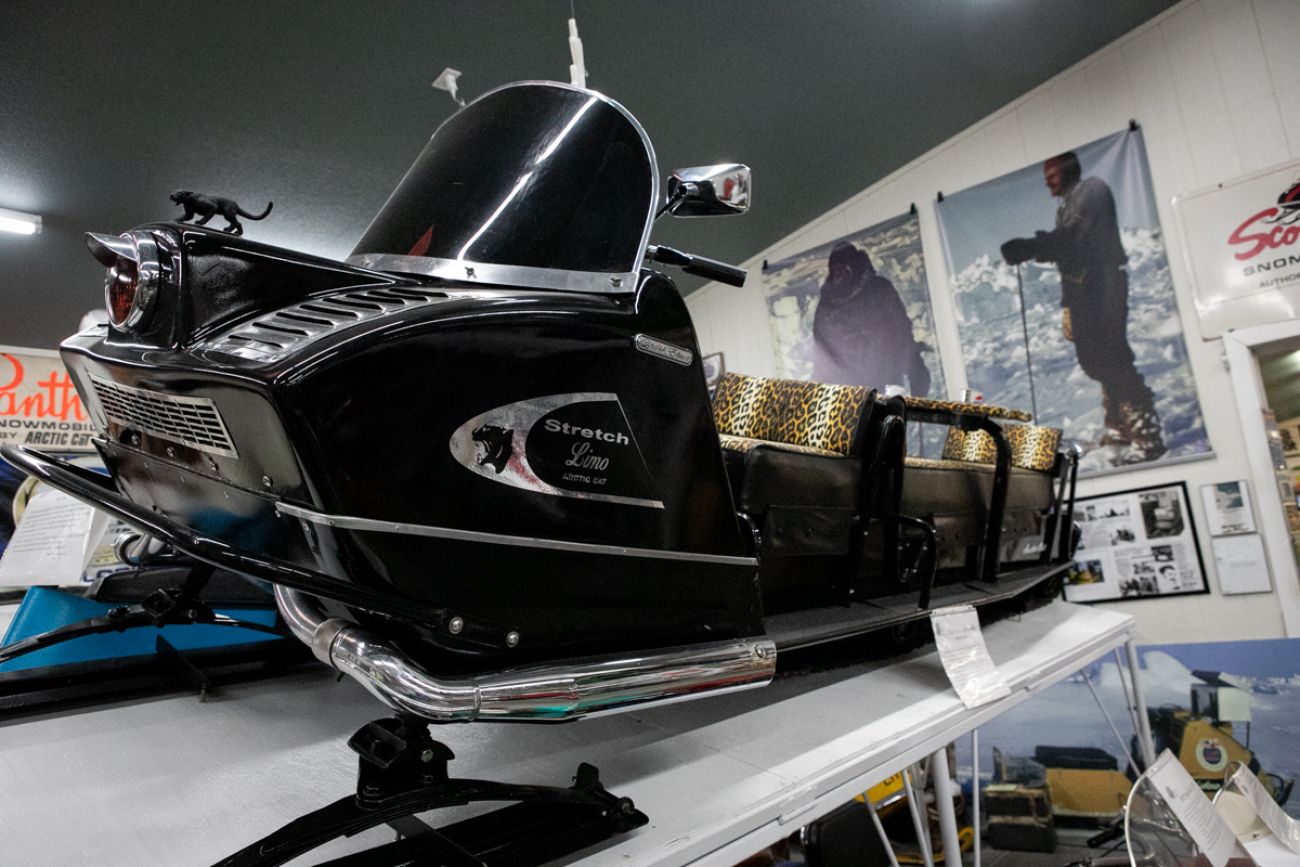Michigan history and the EV future collide at a UP snowmobile museum

- The Top of the Lake Snowmobile Museum in Naubinway honors a bygone era in Michigan transportation
- Its mission has taken on a new meaning amid Michigan’s waning winters and motorsports companies pulling away from the snow business
- For EV drivers the museum is something of an oasis in the UP’s charging desert
NAUBINWAY—The Upper Peninsula’s peak tourism season may run from Memorial Day to Labor Day, but true Yoopers take pride in their ability to stick around through bone-chilling winters.
And in a modest gray building along Highway 2, visitors can tap into that spirit all year long at a museum dedicated to preserving the history of a beloved — but waning — UP winter pastime.
Inside the Top of the Lake Snowmobile Museum, nearly 200 vintage sleds offer a glimpse into the sport’s heyday. For $5, visitors are treated to a quintessentially “Up North” history lesson in a showroom packed with sleds up to a century old. It’s also unwittingly become a destination for another group of travelers — electric car owners looking for a place to charge up. More on that later.

At the center of it all is 74-year-old Charlie Vallier, a lifelong Yooper who’s been riding and collecting snowmobiles since his childhood.
Unlike modern snowmobiles that all look similar, he said, the snowmobiles of his youth “had character to them.”
Related:
- Gretchen Whitmer is all-in on EVs. But state’s fleet is almost all gas powered
- Miniature museum in northern Michigan offers wacky take on taxidermy
- Up North businesses help fill Michigan’s EV charging station gap
- Michigan’s EV evangelists luring 'fence-sitters' away from gas cars
Vallier is chairperson of the nonprofit museum, which opened in 2007 and is operated by a 10-member volunteer board and a small staff. It spun off a vintage snowmobile show that’s been going strong in Naubinway for more than three decades.
His passion for snowmobiling dates even further back, to his teenage years when his dad purchased the family’s first sled.
“We had eight kids in my family,” he said, and the 1965 Hus-Ski could seat four at a time. “That’s four kids out of the house.”
Unlike the “stupid fast” snowmobiles of today, it topped out at about 15 miles per hour.
“We’d go out with other people, and the parents would sit there and have a bonfire, cook hot dogs and let the kids go play with the snowmobiles out in the field,” he said.
In the decades since, Vallier’s love of vintage snowmobiles has taken him and his wife, Marilyn, all over the country in search of models to add to their collection. About 30 of the museum’s specimens belong to the Valliers. There are about 170 more in garages at home.
“You gotta have a hobby of some sort,” Charlie said. “Some people go on cruises. Some go on fishing trips. I go on snowmobile trips.”
But it’s not all about fun and whimsy. With winters waning and today’s motorsports companies retreating from the snow business, the museum’s mission has taken on new meaning. And its operators find themselves simultaneously honoring bygone eras in Michigan transportation history, while helping to usher in a new one.

History on ice
The first snowmobiles, Vallier explains, were work machines of the early 1900s, built for hauling commercially caught fish off the ice in the Great Lakes or helping trappers cover more ground in the dense UP wilderness.
By midcentury, fun became a priority as hundreds of manufacturers entered the market, touting snowmobiles as a new way for northerners to smile through the harsh winters.
The museum’s collectors have packed the place with treasures from that heyday. It has a 1967 Stanaback that’s the lone specimen of its kind. It has one of only three recreational sleds made by the Allis Chalmers company, which specialized in models made for troops in World War II.
“We’ve got a Waywego that was made in Trenary, Michigan,” he says. “Timberwolves: Eight of them were made in Sault, Michigan. We have one here.”
Next came snowmobile races like the I-500 in Sault Ste Marie, and a gradual push toward the faster, higher-tech machines of today.
Compared to the bygone era Vallier remembers, modern snowmobiling is a pricey and imperiled pastime. Sleds can reach speeds of 120 miles per hour, average about $20,000 and are made by just a handful of manufacturers.
And the sport is waning as climate change melts America’s winters and prompts motorsports enthusiasts to trade their sleds for ATVs. This past winter was the worst yet.
It’s difficult for Vallier to find a bright side in that reality. But if he must: Buyers’ hesitation to pay big money for sleds that might only see a few weekends of snow each year has sparked a small renaissance for vintage machines.
Not only are they cheaper, Vallier said, but “we get two-three inches of snow, and you can get your old sled out and ride it around.”
Modern snowmobiles usually need at least double that.

Honoring the past while fueling the future
Given all that snowmobilers have to lose as a result of fossil fuel consumption, it’s fitting that the Top of the Lake museum finds itself playing a small but crucial role in the energy transition.
Over the past year or so, it has become an unofficial charging hub for electric vehicle drivers passing through the UP.
It wasn’t on purpose.
But at some point, an EV driver discovered the 50-amp electrical outlets on the museum property, which were meant for use by RVers.
With the right adapter, they can also charge an EV.
Word spread, and the museum became an unofficial oasis in the UP’s EV charging desert. It sits at the midpoint of one of Michigan’s most range anxiety-inducing roadways, with just one public charger in a 140-mile stretch.
At first, the sudden use by EVs posed a problem: Electricity costs money, and drivers were taking it for free. A $5-per-hour fee resolved that issue, and a group of EV drivers later pooled money to buy the museum a Grizzl-E Level 2 wall charger that was installed last week.
Vallier said the situation is a win-win: Drivers get somewhere to refuel, and while they wait, the snowmobile museum gets a few visitors who otherwise may have never stopped to explore its trove of outdoor history artifacts.
“We just had a couple from Chicago that was in Mackinaw City for the weekend,” Vallier said. “These people are coming for the charging system, but this is just a little add-on to pass the time while they’re waiting.”
Michigan Environment Watch
Michigan Environment Watch examines how public policy, industry, and other factors interact with the state’s trove of natural resources.
- See full coverage
- Subscribe
- Share tips and questions with Bridge environment reporter Kelly House
Michigan Environment Watch is made possible by generous financial support from:
Our generous Environment Watch underwriters encourage Bridge Michigan readers to also support civic journalism by becoming Bridge members. Please consider joining today.
See what new members are saying about why they donated to Bridge Michigan:
- “In order for this information to be accurate and unbiased it must be underwritten by its readers, not by special interests.” - Larry S.
- “Not many other media sources report on the topics Bridge does.” - Susan B.
- “Your journalism is outstanding and rare these days.” - Mark S.
If you want to ensure the future of nonpartisan, nonprofit Michigan journalism, please become a member today. You, too, will be asked why you donated and maybe we'll feature your quote next time!






